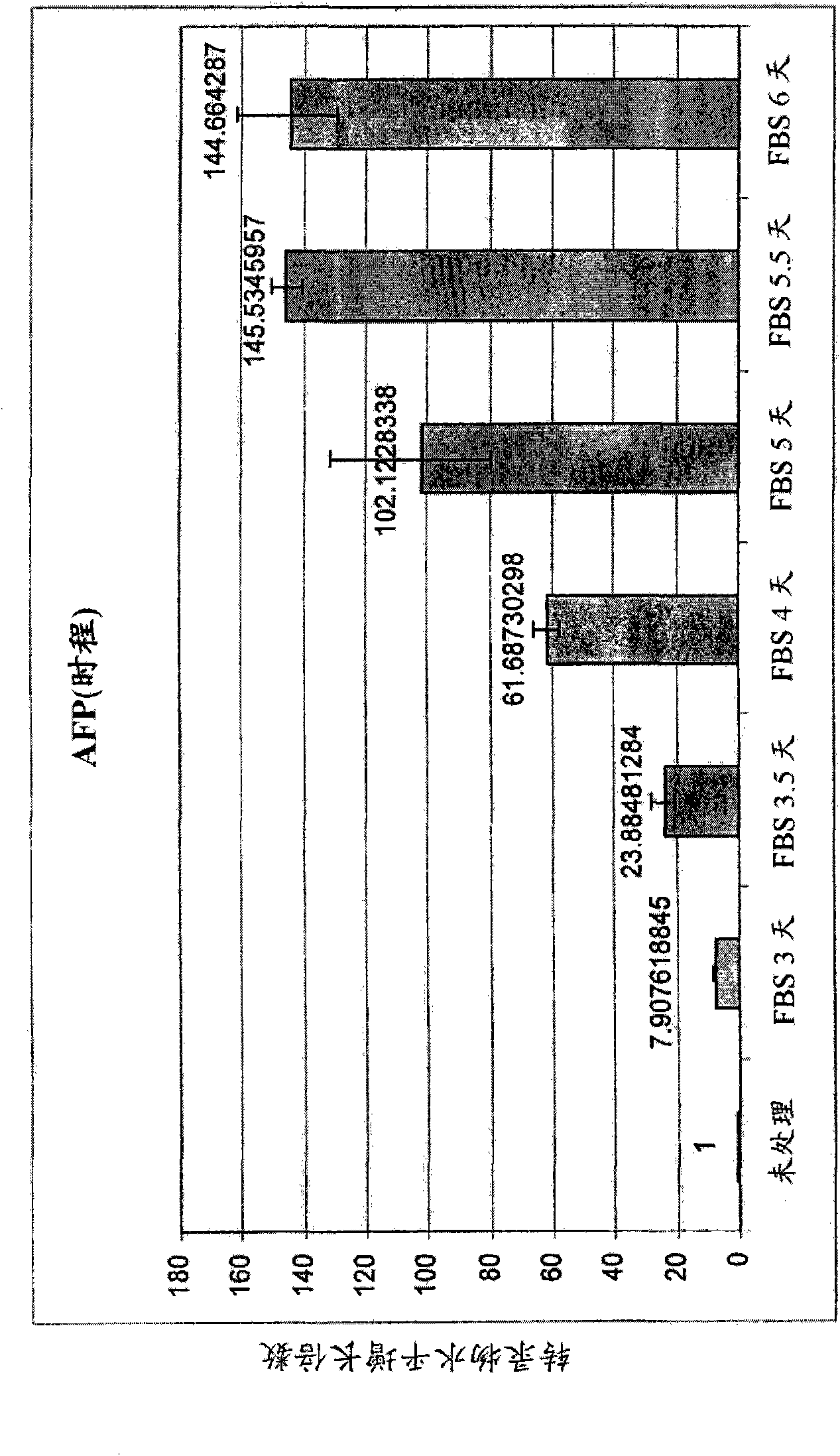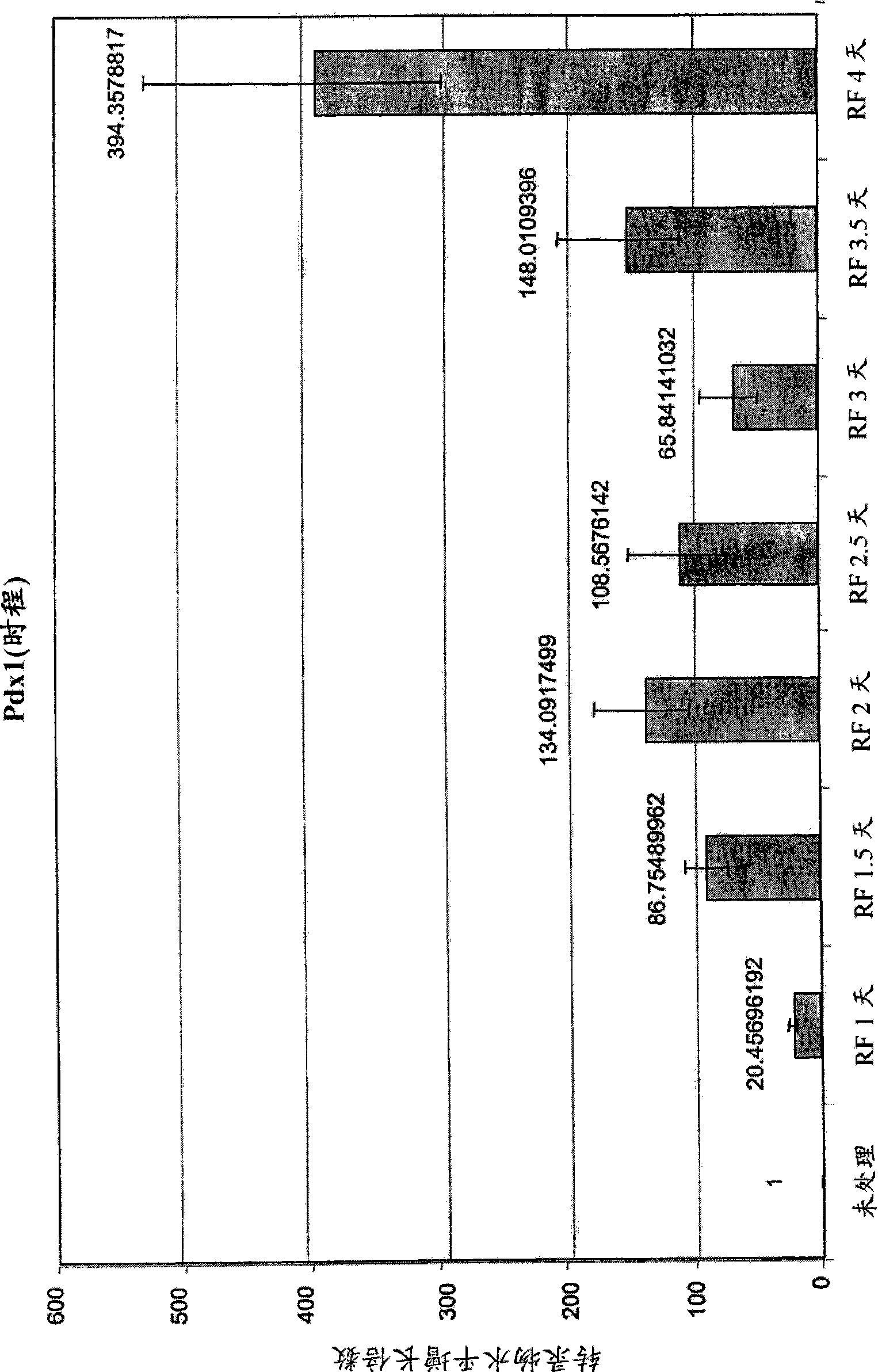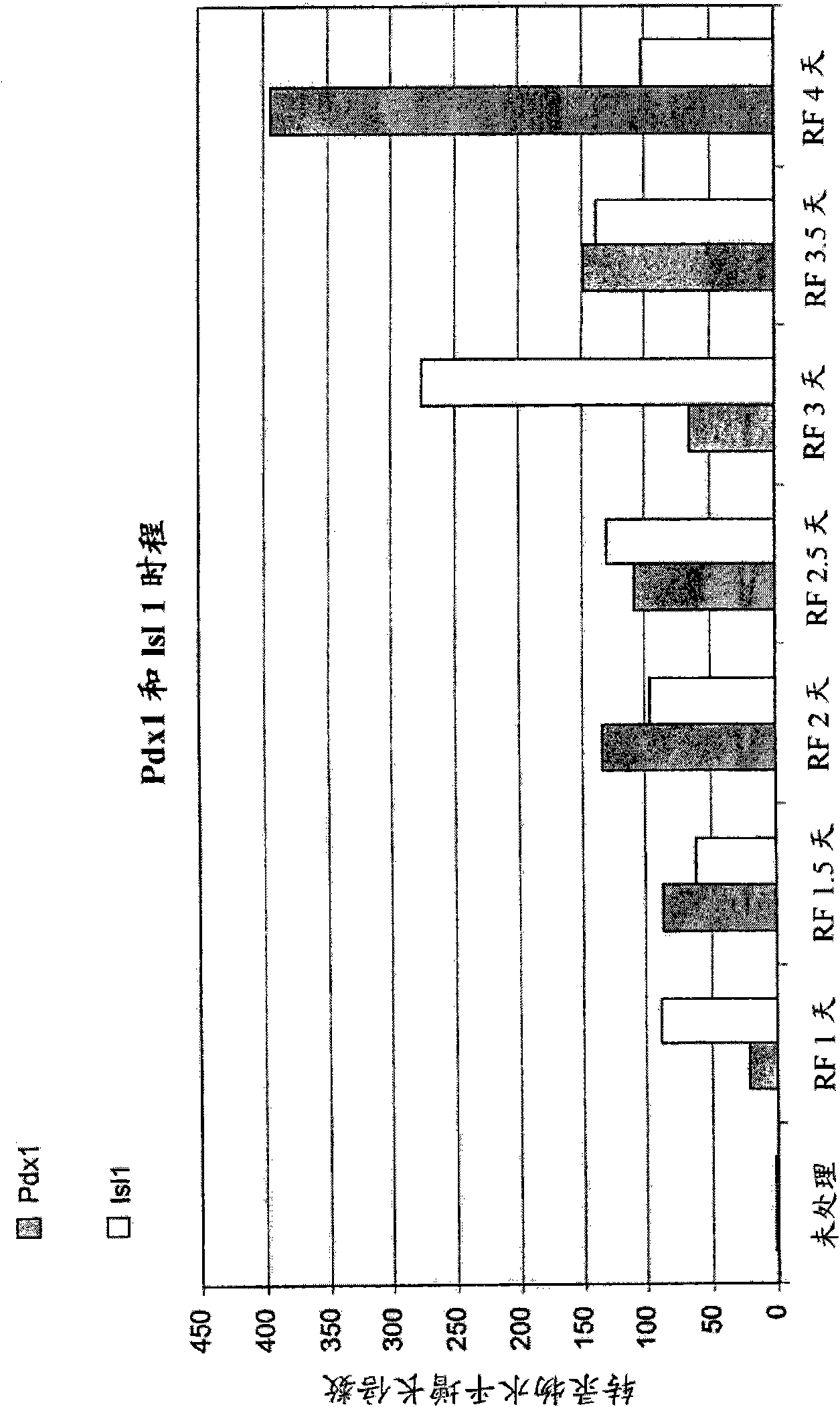Pancreatic and liver endoderm cells and tissue by differentiation of definitive endoderm cells obtained from human embryonic stems
A technology for human embryonic stem cells and definitive endoderm, which is used in tissue culture, biochemical equipment and methods, microorganisms, etc.
- Summary
- Abstract
- Description
- Claims
- Application Information
AI Technical Summary
Problems solved by technology
Method used
Image
Examples
Embodiment 1
[0125] Culture of human ES cells
[0126] Routine culture of human ES cells
[0127] The human embryonic stem cell line BG01 (BresaGen, Inc., Athens, GA) was used in this work. BG01 cells were grown in hES medium, and the medium consisted of DMEM / F-12 (50 / 50) supplemented with 20% knockout serum replacer (KSR; Invitrogen), 0.1 mMMEM non-essential amino acids (NEAA; Invitrogen), 2 mM L-glutamine (Invitrogen), 50 U / ml penicillin, 50 μg / ml streptomycin (Invitrogen), 4 ng / ml bFGF (Sigma) and 0.1 mM β-mercaptoethanol (Sigma). Cells were grown on mouse primary embryonic fibroblast feeder layers that were mitotically inactivated with mitomycin c. Feeder cells at 1.2x10 per 35mm dish 6 Cell seeding. BG01 cells were passaged using the collagenase / trypsin method. Briefly, medium was removed from the plate, 1 ml of 200 U / ml collagenase type IV (GibcoBRL) was added, and cells were incubated at 37°C for 1-2 minutes. Collagenase was removed and 1 ml of 0.05% trypsin / 0.53mM EDTA (GIBCO...
Embodiment 2
[0133] Treatment of HES cells with PI3-kinase inhibitors leads to differentiation of HES cells
[0134] Inhibitor / Differentiation Reagent Treatment of Stem Cells
[0135] BG01 cells were passaged from feeder using the collagenase / trypsin method and cultured at 1x10 in conditioned medium (CM; MEF conditioned medium plus 8ng / ml bFGF). 5 Density of cells per 35 mm dish was seeded on matrigel-coated dishes. After approximately 24 hours, replace the medium with fresh CM, CM with inhibitor (resuspended in EtOH), CM with EtOH, or Spontaneous Differentiation medium (hES medium minus bFGF) .
[0136] In other methods, BG01 cells were seeded at different concentrations prior to exposure to CM, CM with inhibitors and CM with EtOH, cells were seeded at the following concentrations: approximately 5x10 4 Cells / 35mm dish, about 1x10 5 Cells / 35mm dish, about 2x10 5 Cells / 35mm dish, about 4x10 5 Cells / 35mm dish and about 6x10 5 Cells / 35mm dish.
[0137] The inhibitor LY 294002 (Biomo...
Embodiment 3
[0142] Characterization of cells treated with PI3-kinase inhibitors
[0143] Inhibitor studies were performed as described in Example 2.
[0144] Flow Cytometry
[0145] For flow cytometry, BG01 cells were washed with 1xPBS and fixed with 2% paraformaldehyde / 1xPBS for 10 min at room temperature. After that, the cells were washed with 1xPBS, about 2x10 5 Cells were incubated with primary antibody diluted in 1% BSA / 1xPBS. Primary antibodies used were anti-CD9 and anti-thrombomodulin antibodies (Cymbus Biotechnology), FITC-conjugated mouse monoclonal antibodies, diluted 1:10. Cells were incubated at 4°C for 30 minutes and then washed twice with 1xPBS. When appropriate, cells were resuspended in a secondary antibody, anti-mouse Alexa-488 (Molecular Probes), diluted 1:1000 in 1% BSA / PBS, incubated at 4°C for 30 min, and then washed in 1xPBS on both sides. Second-rate. Cells were resuspended in 1% BSA / 1xPBS and analyzed for surface expression using a Beckman Coulter FC500. ...
PUM
 Login to View More
Login to View More Abstract
Description
Claims
Application Information
 Login to View More
Login to View More - R&D
- Intellectual Property
- Life Sciences
- Materials
- Tech Scout
- Unparalleled Data Quality
- Higher Quality Content
- 60% Fewer Hallucinations
Browse by: Latest US Patents, China's latest patents, Technical Efficacy Thesaurus, Application Domain, Technology Topic, Popular Technical Reports.
© 2025 PatSnap. All rights reserved.Legal|Privacy policy|Modern Slavery Act Transparency Statement|Sitemap|About US| Contact US: help@patsnap.com



